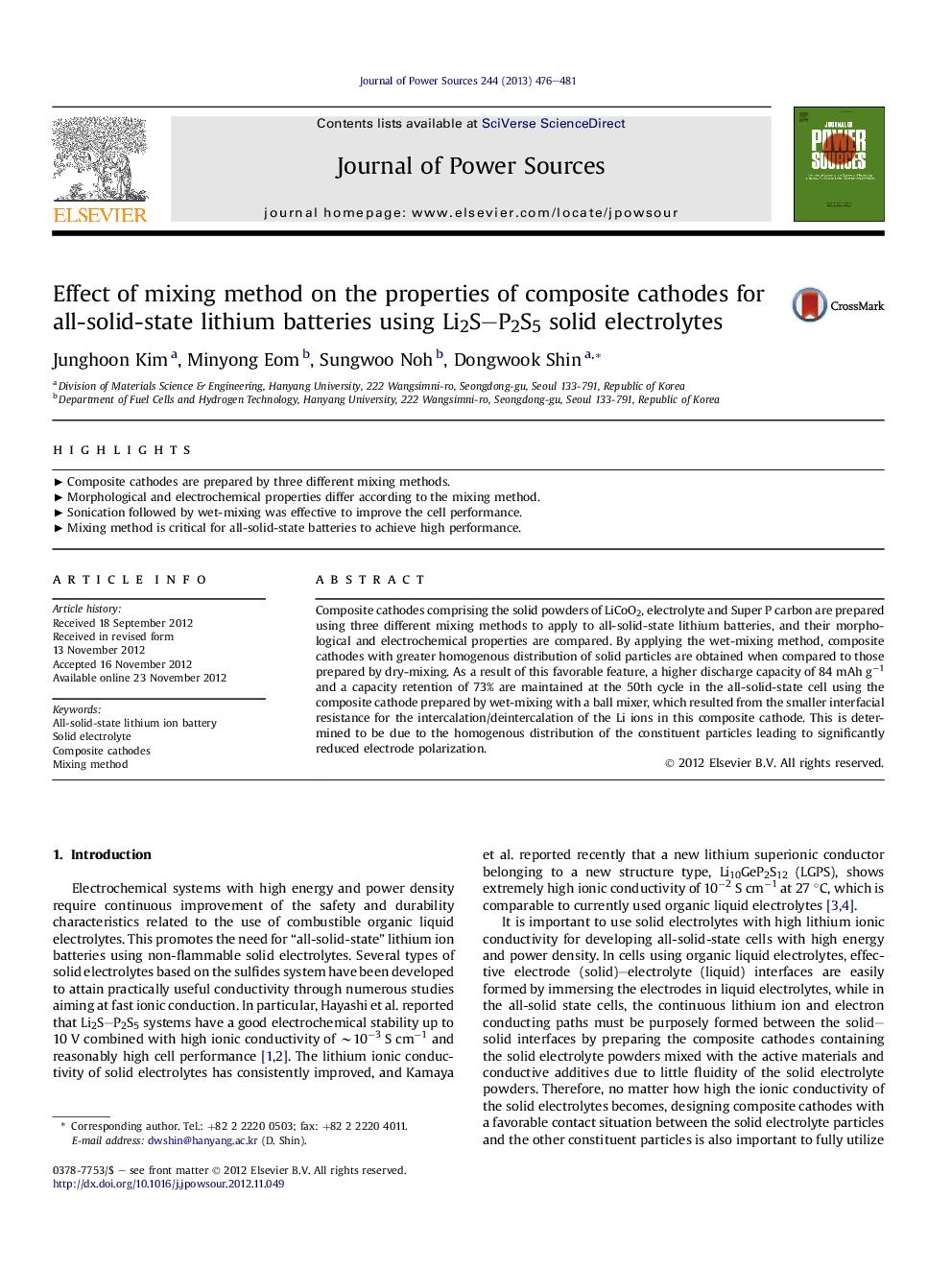| Article ID | Journal | Published Year | Pages | File Type |
|---|---|---|---|---|
| 1287501 | Journal of Power Sources | 2013 | 6 Pages |
Composite cathodes comprising the solid powders of LiCoO2, electrolyte and Super P carbon are prepared using three different mixing methods to apply to all-solid-state lithium batteries, and their morphological and electrochemical properties are compared. By applying the wet-mixing method, composite cathodes with greater homogenous distribution of solid particles are obtained when compared to those prepared by dry-mixing. As a result of this favorable feature, a higher discharge capacity of 84 mAh g−1 and a capacity retention of 73% are maintained at the 50th cycle in the all-solid-state cell using the composite cathode prepared by wet-mixing with a ball mixer, which resulted from the smaller interfacial resistance for the intercalation/deintercalation of the Li ions in this composite cathode. This is determined to be due to the homogenous distribution of the constituent particles leading to significantly reduced electrode polarization.
► Composite cathodes are prepared by three different mixing methods. ► Morphological and electrochemical properties differ according to the mixing method. ► Sonication followed by wet-mixing was effective to improve the cell performance. ► Mixing method is critical for all-solid-state batteries to achieve high performance.
